The New Longines Conquest Heritage Central Power Reserve
One of the most original power reserve indicators from the late 1950s using rotating discs in the centre of the dial makes a dashing comeback.
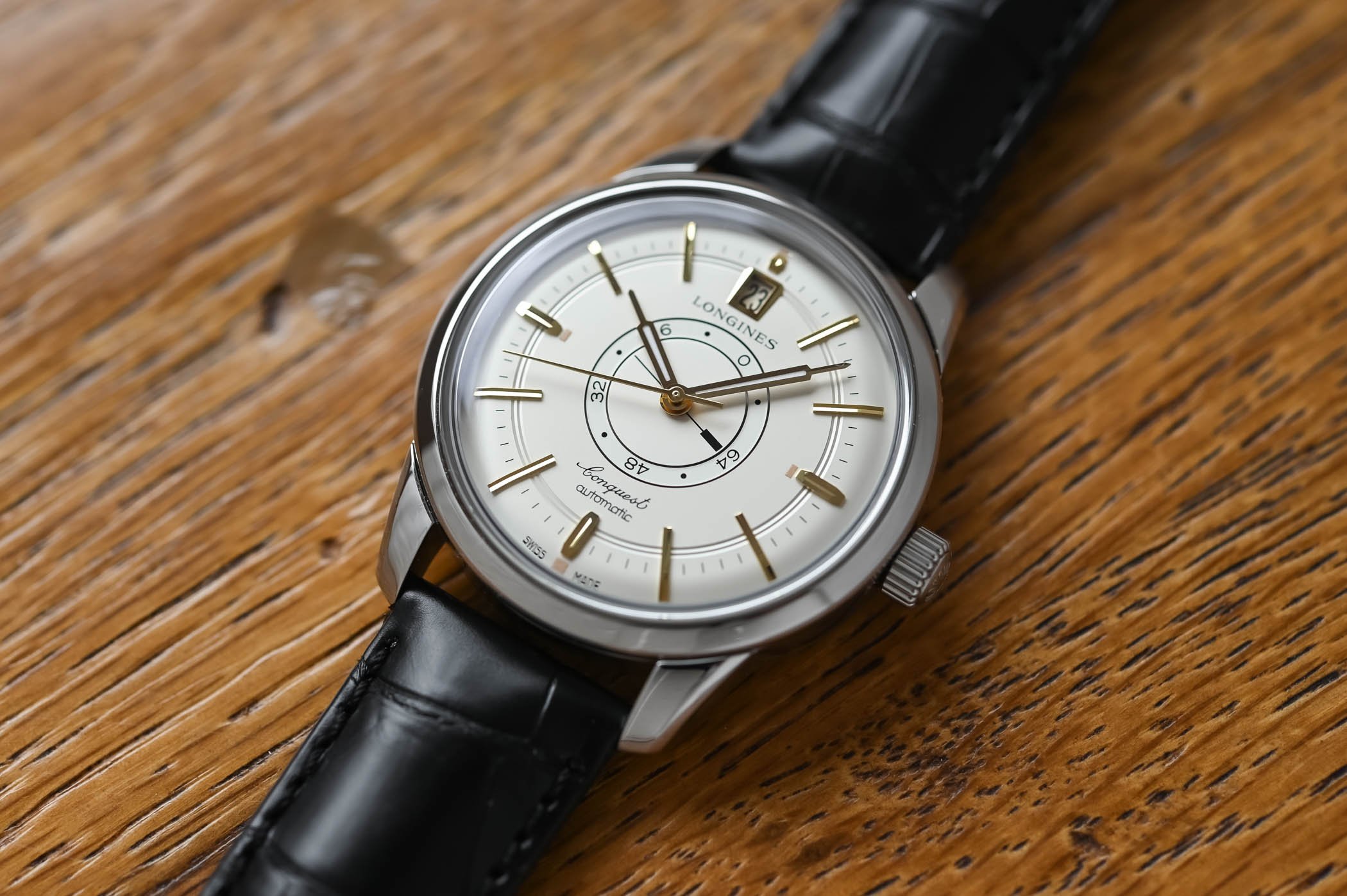
While it might not come across as a particularly high-brow mechanical complication, the power reserve indicator is extremely useful. The equivalent of a petrol gauge on a watch, a power reserve indicator lets you know how much tension is left in the mainspring or, in simple terms, how much fuel is left in the tank. One of the most unusual takes on this complication belongs to a 1959 Conquest model made by Longines. In a departure from more conventional and unobtrusive power reserve displays, Longines’ novel power reserve gauge was represented on two rotating discs smack in the centre of the dial. Capturing the elegant vintage 1950s dress watch look of the original and coinciding with the 70th anniversary of the Conquest collection, Longines releases a re-edition of its historical Central Power Reserve model. Available with grey, black or champagne-coloured dials, the handsome Heritage Conquest Central Power Reserve flaunts the fascinating dial-side indicator that lets you track the current state of wind in a unique, stylish and highly effective manner.
Short background
Invented by Abraham-Louis Breguet in the 1800s and used inside some of his pocket watches, the importance of a power reserve indicator cannot be underestimated in the historical context of navigation when onboard marine chronometers were vital companions. Used to establish longitude, marine chronometers had to be kept wound, and the presence of a power reserve gauge was crucial to avoid potential mistakes in calculating the bearings of a ship.
Later used for railroad-grade pocket watches, the power reserve indicator eventually made its way to wristwatches in 1933 on a prototype made by the brand Breguet. With the advent of automatic movements, power reserve gauges reminded owners how long the watch could continue ticking before it needed to be wound. Making its debut inside Jaeger-LeCoultre’s serialised Powermatic collection of 1948, the power reserve indicator used a series of gears linked to the ratchet wheel connected to the power reserve hand. The most conventional formats for power reserve indicators are small apertures with diminishing blocks of colour, linear scales, semi-circular speedometer-style indicators, petrol gauges and classic +/- AB/AUF signs.
Longines 1959 Conquest Power Reserve
One of the most original power reserve displays belongs to Longines’ Conquest collection, launched in 1954. Introduced to the Conquest family in 1959, the automatic ref. 9028 was powered by the Longines calibre 292 and featured the power reserve indicator smack in the centre of the dial using two rotating discs. By winding the crown or moving the wrist, the outer disc bearing the numbers 0 – 45 rotated clockwise until the number ’45’ aligned with the black rectangular tip of the hand on the inner disc. From this point of maximum wind, the two discs rotated together until the power reserve was gradually depleted, forcing the inner disc to rotate counterclockwise until the indicator hit the ‘0’ mark, indicating an empty tank.
Conquest Heritage Central Power Reserve
As part of Longines’ highly successful Heritage family, fans of the historical ref. 9028 model will enjoy how the new one respects many of the design features of its ancestor. While the movement has been upgraded to 21st-century standards and the case size increased from 35mm to 38mm, the retro look and feel are spot-on. The redesigned 50m water-resistant stainless steel case displays alternating satin-finished and polished surfaces, is topped by a box sapphire crystal and features the winged hourglass logo in the ribbed crown.
Faithful to the original, the dial has two indented circles, giving it its characteristic bullseye look. The recessed tracks demarcate the minutes track on the periphery and are traversed by the applied and finely faceted hour markers and the trapezoid-framed date window at noon. The elongated vintage-style indices, the frame of the date window and the luminous skyscraper hour and minute hands, as well as the central seconds hand, vary in colour depending on the dial; the grey dial has rose gold-coloured appliques, the champagne dial has yellow gold-coloured ones, and the ones on the black dial are silver-coloured. The inscriptions on the dial reflect those found on the original, although the applied winged hourglass is not featured.
Placed in the centre of the dial are the famous rotating discs corresponding to Longines’ unique interpretation of the power reserve. Continuously changing to reflect the current state of wind, the external disc is now calibrated from 64 to 0. Powered by the brand’s proprietary automatic calibre L896.5, the power reserve is 72 hours, represented by the dot between 64 and 0. How does this power reserve work? Let’s check step by step.
- Step 1: As the mainspring is wound, either by wearing the watch or manually winding with the crown, the outer disc rotates clockwise to larger numbers as the power reserve increases.
- Step 2: the outer disc rotates up until it reaches its maximum at 64 to align with the black rectangular marker. From there, the two discs rotate together to indicate the watch is fully wound (the two discs remain aligned as long as the power reserve is at its maximum)
- Step 3: as the watch runs and the mainspring unwinds, the inner disc rotates clockwise until the black rectangle indicator hits the 0 mark, showing that the watch has run out of energy.
Visible through the transparent area of the screw-down caseback is the automatic calibre L896.5 developed by ETA exclusively for Longines. The silicon balance spring offers superior magnetic resistance (10 times greater than the ISO 764 benchmark), the balance wheel oscillates at 25,200 vibrations/hour, and the mainspring can store up to 72 hours of power.
Availability & Price
The Longines Conquest Heritage Central Power Reserve is available with black or grey alligator leather straps with a steel pin buckle and will retail for CHF 3,650 and is now available from the brand and its retailers as part of the permanent collection.
For more details, please visit www.longines.com.


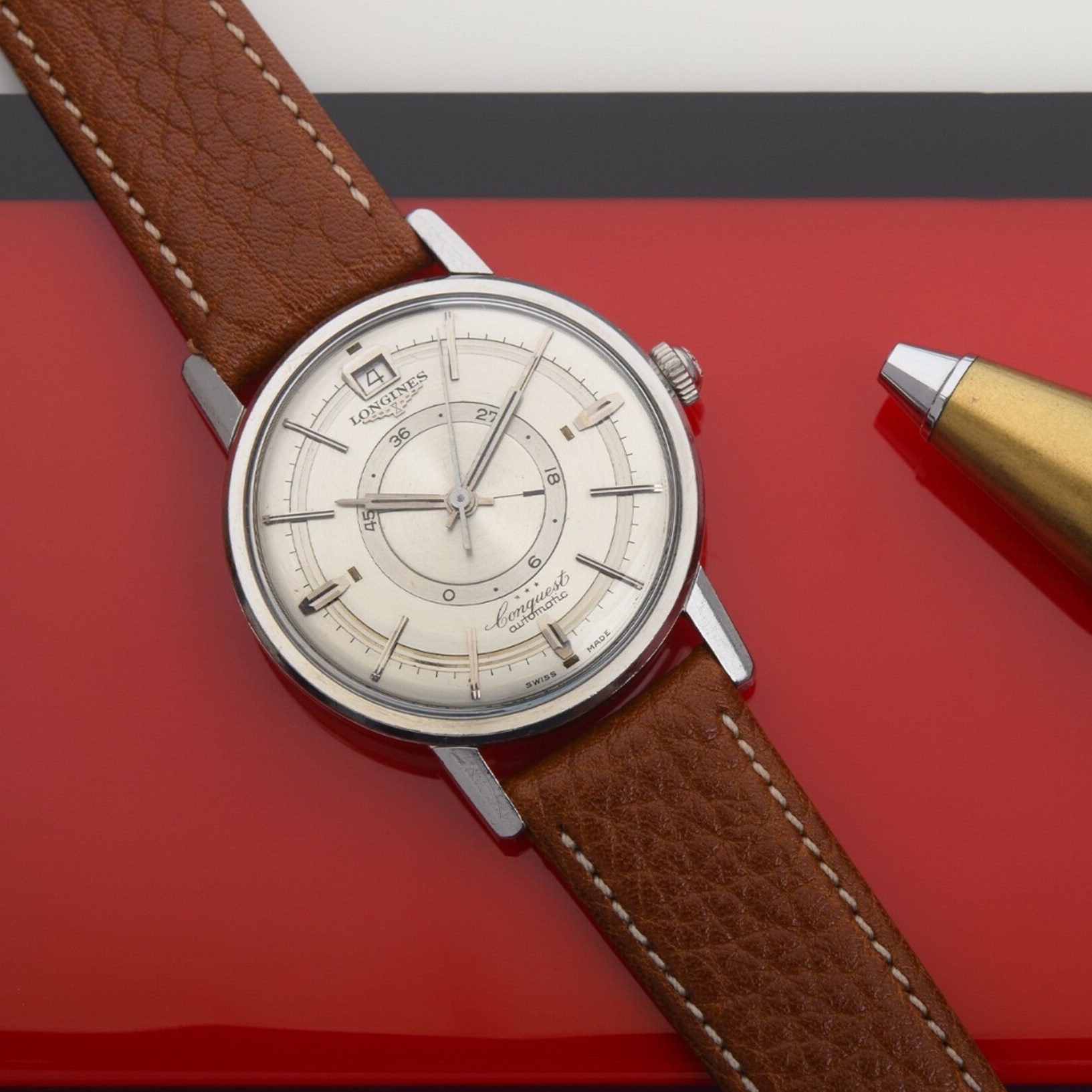





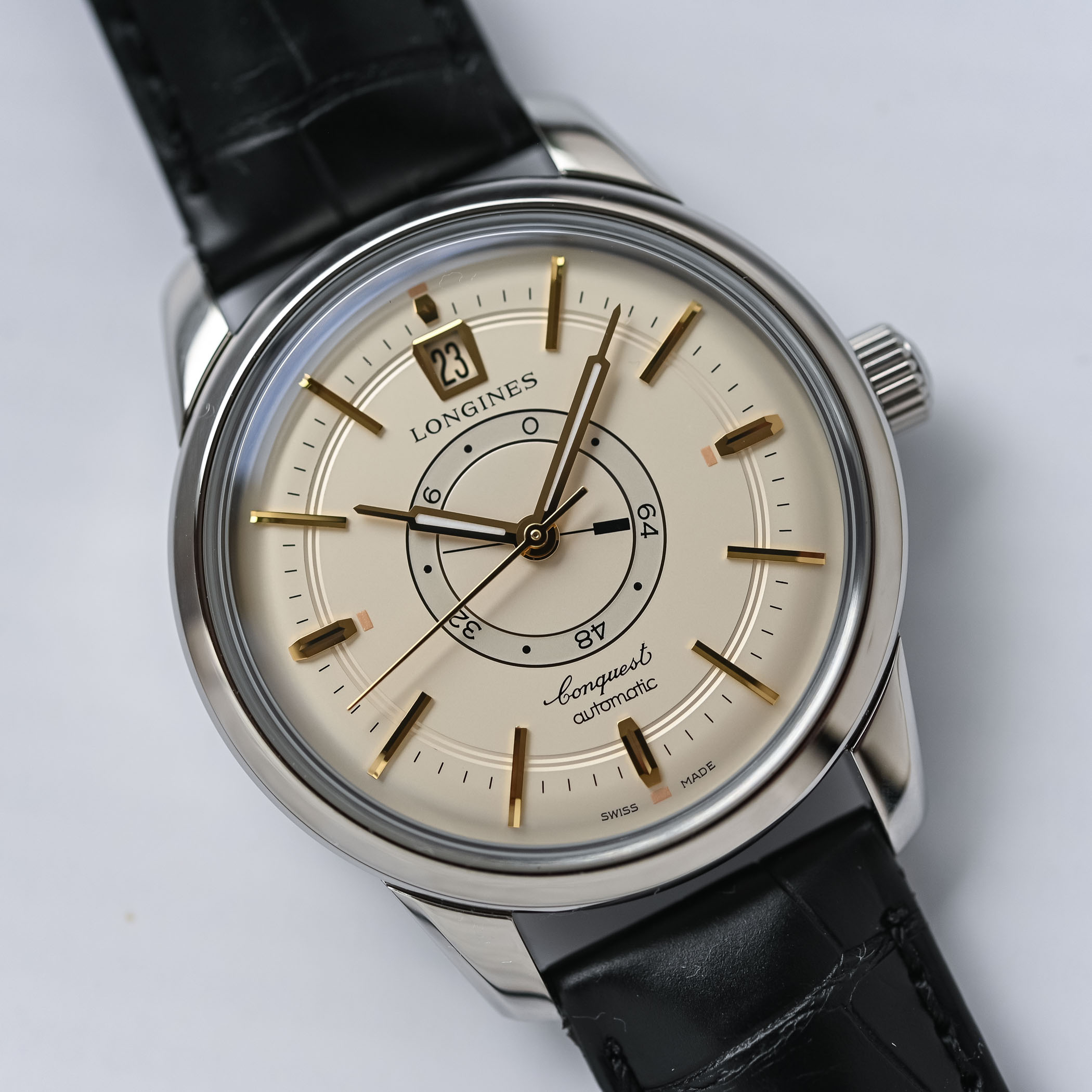
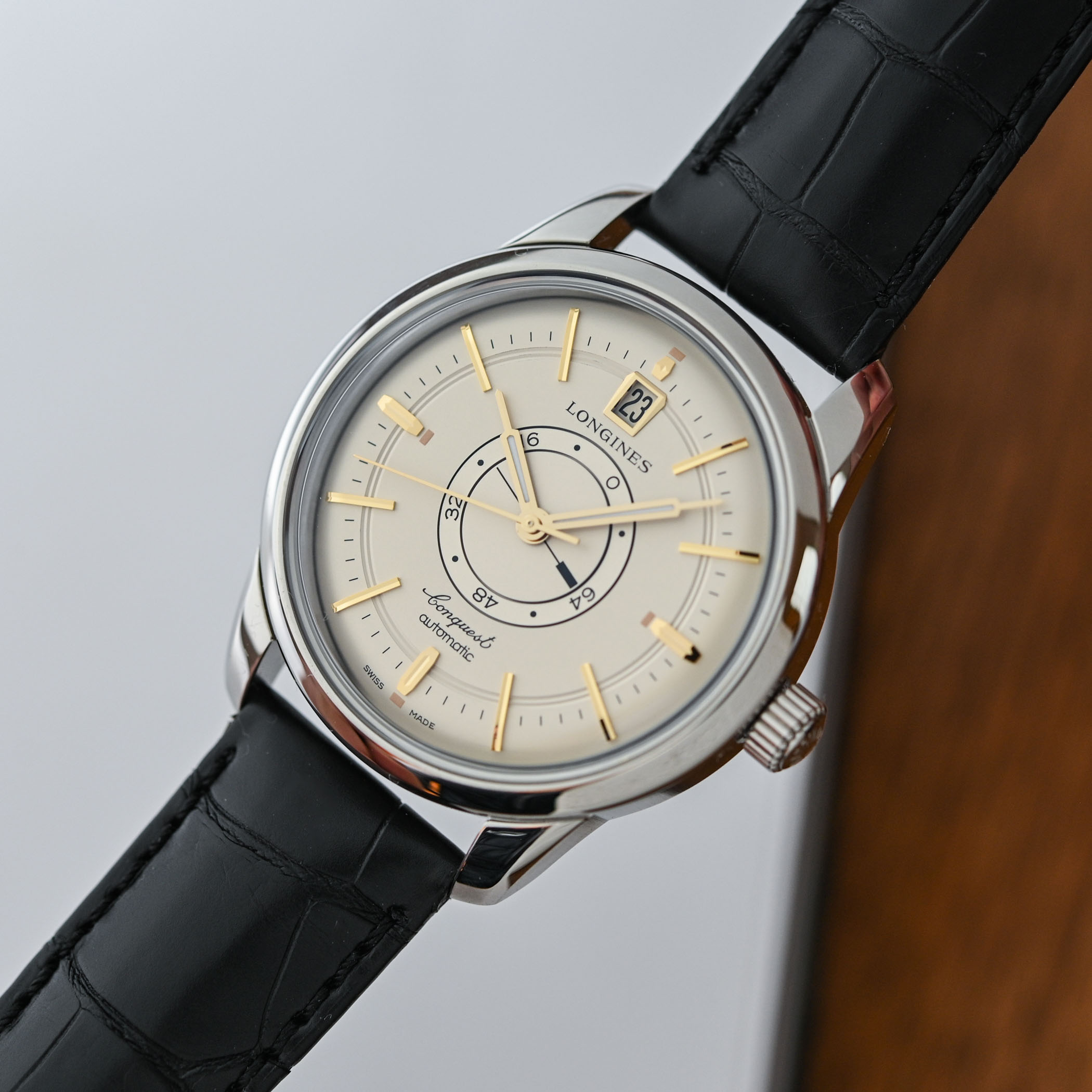
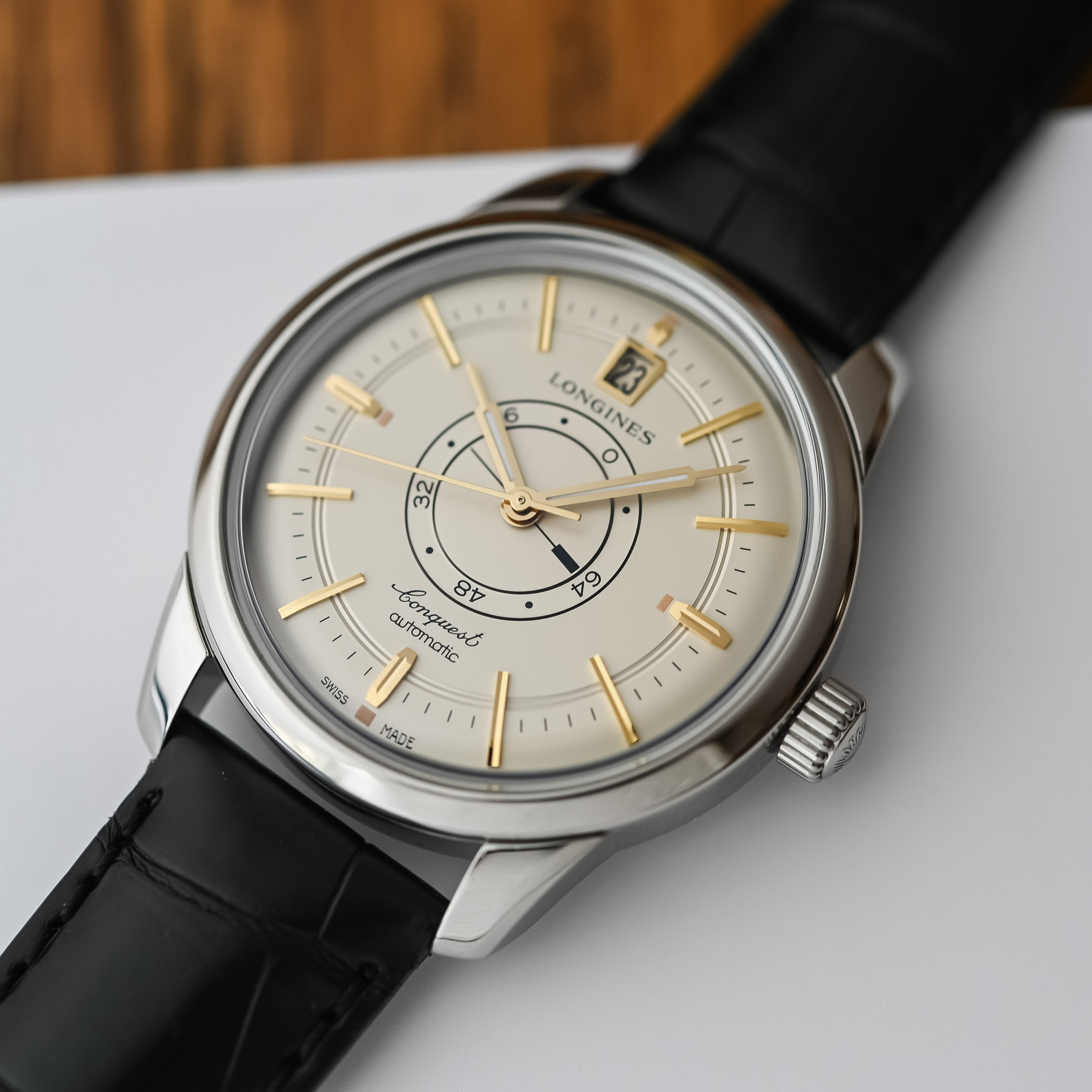

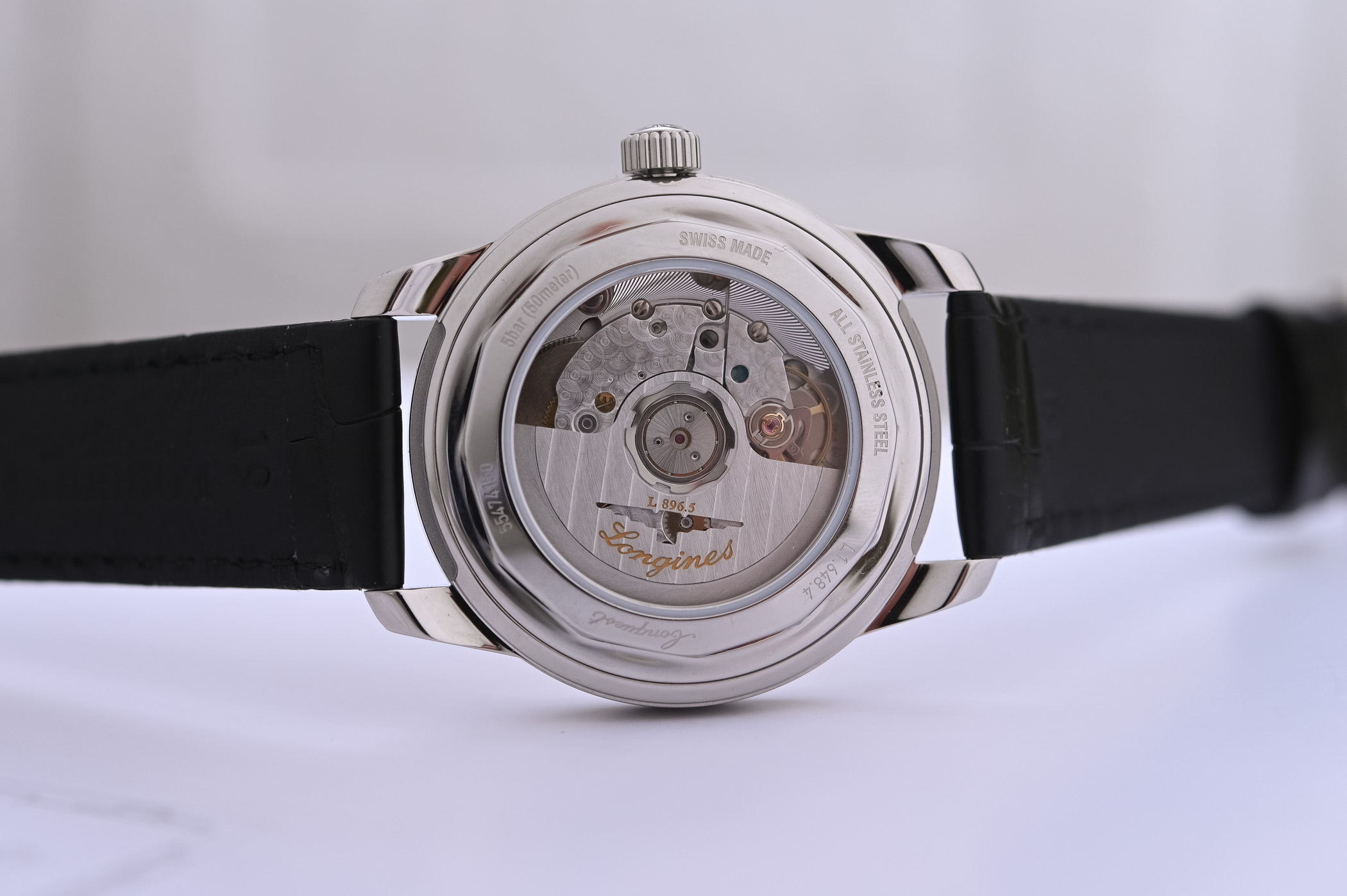
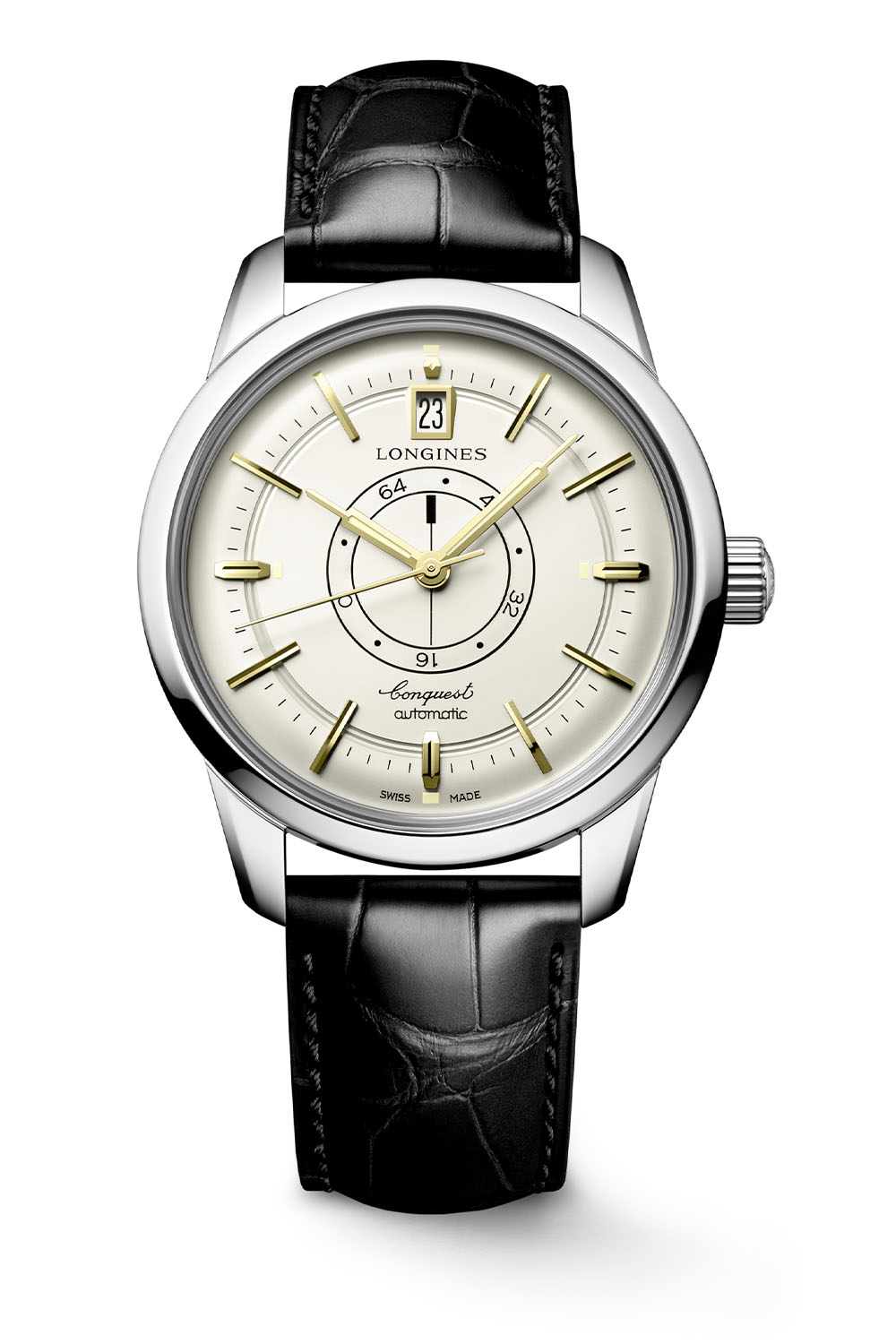
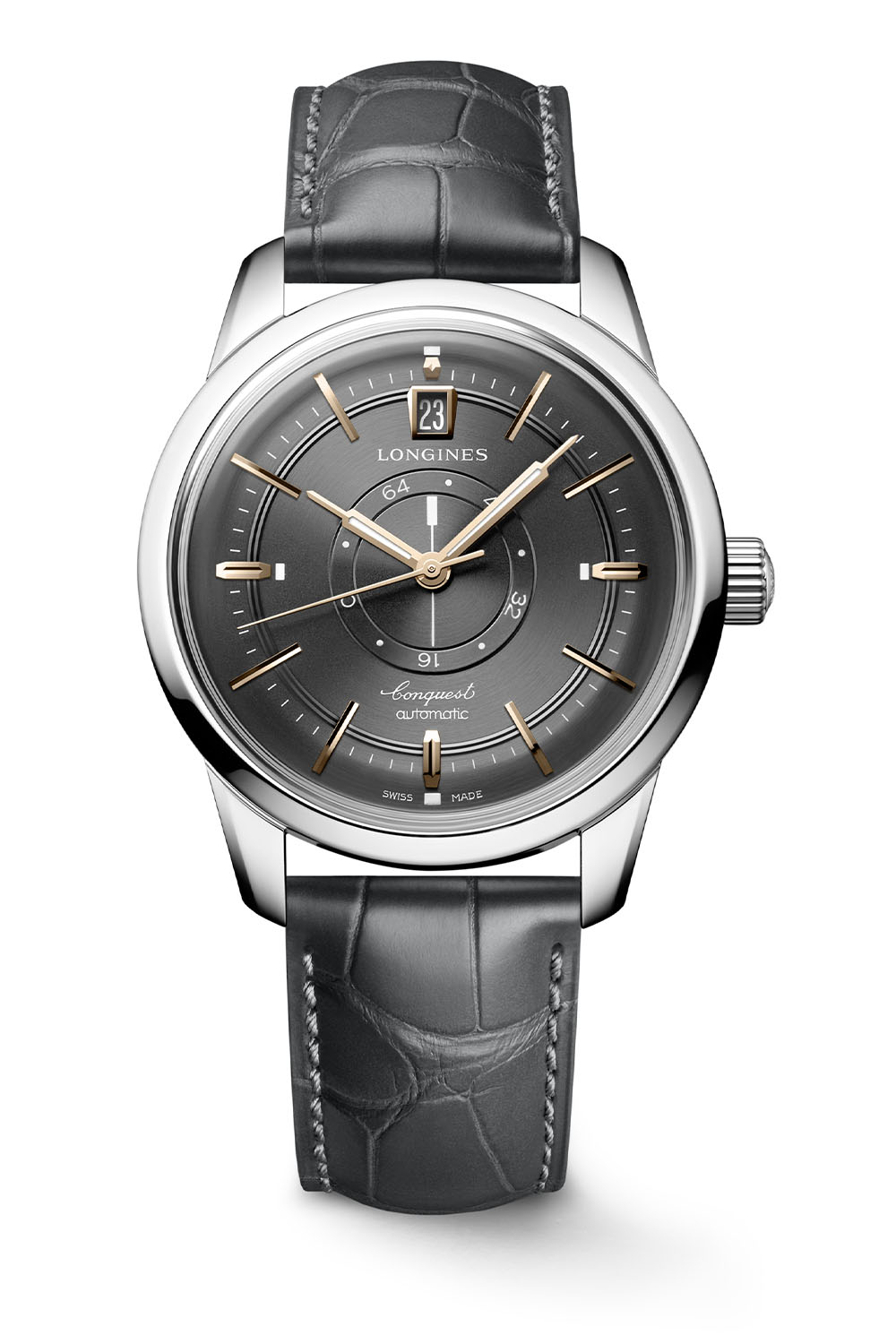
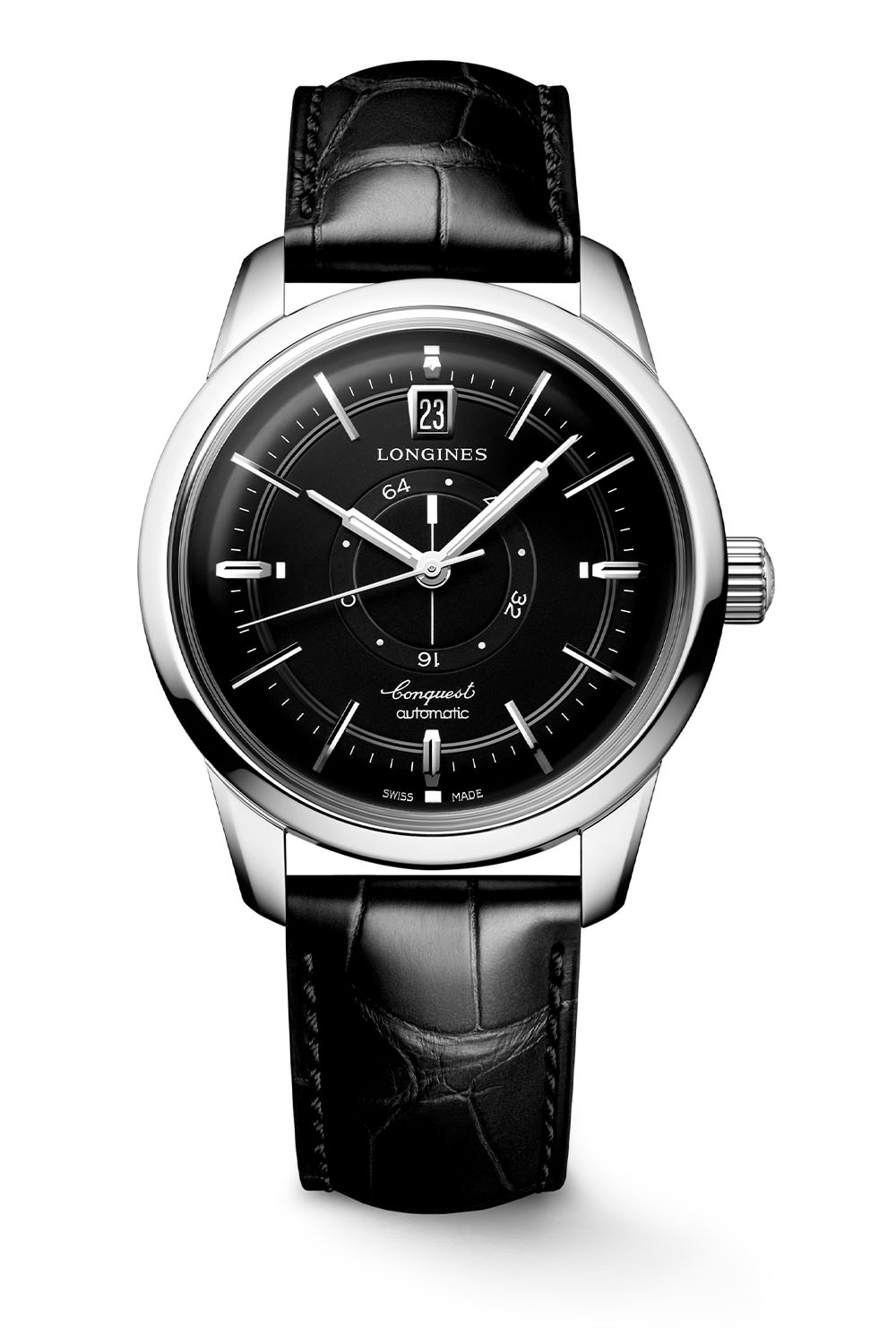



8 responses
That is one weird looking watch.
I love how longines kept true to the original, but I fear that at this price point there will be a small market for a watch like this. I do hope that Longines will keep the Conquests coming and release the colorful 2023 rework in a smaller 38 or 39mm case size.
Adore the long Breguetesque lugs on the original where they are clearly distinct from the case and provide the watch with an almost instrument presence on the wrist.
If you are going be faithful go all the way particularly when the original was, original.
Uh… That price … :-S
It is actually a pretty good looking watch, and different from everything else. I really like the white dial that shows everything in more detail. Longines, as more or less everyone else from cars to motorcycles, draws from their past to recreate a beautiful watch that even though is brand new, is already born with heritage. Nice job Longines!
The price is out of space, there are tons of options in this price range, whatever if new of second hand.
I’ve bought a NOS 2022 made Omega Speedmaster MkII with 3 years of guarantee left, two weeks ago, for the same price.
I really like power reserve dials, it’s a useful feature. Maybe it’s just me, but the layout of this version seems overly confusing. It has 72 hours, but only says 64, with an additional dot? The reserve level ‘marking’ is confusing, it looks like a “hand” with a counter balance, but the “thick” end is where you read it? I don’t really get it. Wouldn’t a a simple single disk with full/empty scale be better, much easier to read?
Unfortunately, getting anything even a bit beyond a simple 3-hander from a Swiss “luxury brand” will greatly increase the asking price. The price here is therefore not unexpected, but it is still too high. You have to be willing to pay for brand exclusivity over value. Many will, many will not. I will not.